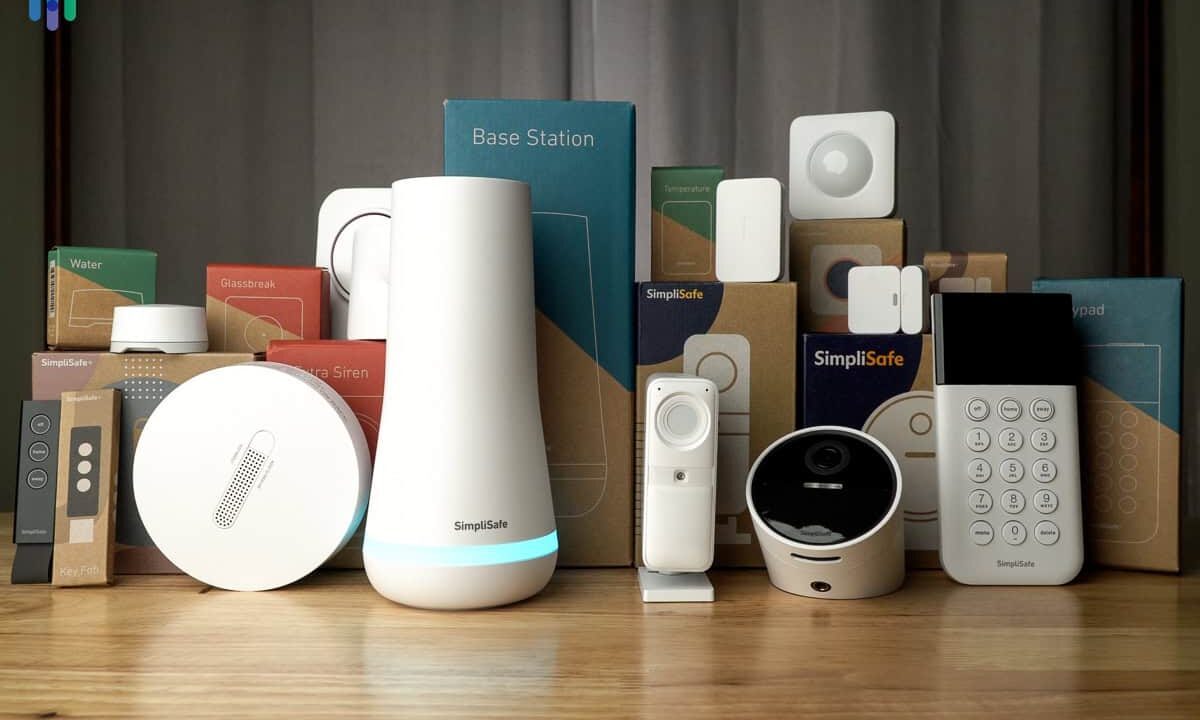Tech startups are the heartbeat of innovation, sparking ideas that reshape how we live, work, and connect. But what exactly is a tech startup, and how do high-tech and tech-enabled startups differ? In this article, I’ll dive deep into these questions, unraveling the nuances with real-world examples, pros and cons, and actionable insights for aspiring entrepreneurs. Whether you’re dreaming of launching the next big thing or just curious about the tech world, this guide is your roadmap to understanding the startup landscape.
What Is a Tech Startup?
A tech startup is a young company built around technology to solve problems in innovative ways. Unlike traditional businesses, tech startups thrive on scalability, aiming to grow fast and disrupt markets with new products or services. Think of companies like Airbnb, which transformed travel by leveraging existing tech, or SpaceX, which pushes boundaries with cutting-edge engineering. These ventures often operate under uncertainty, testing ideas to find a repeatable business model.
Why Tech Startups Matter
Tech startups drive economic growth and innovation, creating jobs and introducing solutions we didn’t know we needed. They challenge established industries, from transportation (Uber) to finance (Stripe). Their agility allows them to pivot quickly, adapting to market demands in ways larger corporations often can’t. For entrepreneurs, they’re a chance to turn bold ideas into reality, even if the path is fraught with risk.
High Tech vs. Tech-Enabled: The Core Differences
The tech startup world splits into two main camps: high tech and tech-enabled. Each has distinct characteristics, goals, and challenges. Understanding these differences is crucial for entrepreneurs deciding which path to pursue.
Defining High Tech Startups
High tech startups are the trailblazers of innovation, creating entirely new technologies or applying cutting-edge advancements to solve complex problems. These companies often require significant research and development (R&D), long timelines, and substantial funding. Examples include Neuralink, developing brain-computer interfaces, or QuantumScape, pioneering solid-state batteries.
Key Characteristics of High Tech Startups
High tech startups are defined by their focus on groundbreaking innovation. They often involve:
- Heavy R&D Investment: Significant resources go into developing proprietary technology, often requiring years of research.
- High Risk, High Reward: Success can lead to massive returns (think 10x–100x), but failure is costly, as seen with Theranos.
- Specialized Talent: They need engineers and scientists with niche expertise, making talent acquisition critical.
- Long Time to Market: Developing new tech, like AI algorithms or biotech solutions, takes time before commercialization.
Defining Tech-Enabled Startups
Tech-enabled startups use existing technologies to improve services or user experiences in established markets. They focus on efficiency, leveraging tools like cloud computing or APIs to deliver value. Think of DoorDash, which uses existing tech to streamline food delivery, or Hired, a talent marketplace for developers.
Key Characteristics of Tech-Enabled Startups
Tech-enabled startups prioritize accessibility and speed. Their hallmarks include:
- Off-the-Shelf Technology: They rely on readily available tools like open-source software or SaaS platforms.
- Faster Market Entry: With less need for R&D, they can launch in months rather than years.
- Competitive Markets: Lower barriers to entry mean more competition, requiring strong branding or customer retention strategies.
- Revenue-Driven: They often generate revenue faster but face challenges in differentiating from competitors.
Comparing High Tech and Tech-Enabled Startups
To clarify the differences, let’s break it down with a comparison table:
| Aspect | High Tech Startups | Tech-Enabled Startups |
|---|---|---|
| Technology Focus | Develop new, cutting-edge technology | Use existing technology creatively |
| R&D Investment | High, often requiring years of development | Low, leveraging off-the-shelf tools |
| Time to Market | Long (2–10 years) | Short (6 months–2 years) |
| Risk Level | High risk, high reward | Moderate risk, moderate reward |
| Examples | Neuralink, QuantumScape, DeepMind | Airbnb, DoorDash, Hired |
| Funding Needs | Significant VC or government funding | Angel investors, crowdfunding, or bootstrapping |
| Market Impact | Create new markets or disrupt entirely | Improve efficiency in existing markets |
Real-World Example: My Friend’s Startup Journey
A few years ago, my friend Sarah launched a tech-enabled startup, a platform connecting freelance tutors with students. She used existing tools like Zoom and Stripe to build it quickly, launching within six months. Her biggest challenge? Standing out in a crowded market. Meanwhile, another friend, Alex, joined a high-tech biotech startup developing a novel cancer diagnostic tool. They spent three years in R&D, burning through millions in funding before their first prototype. Sarah’s company turned a profit faster, but Alex’s has the potential to revolutionize healthcare. Their stories highlight the trade-offs: speed and accessibility versus innovation and impact.
Pros and Cons of High Tech Startups
High tech startups are exciting but not for the faint-hearted. Here’s a quick look at their advantages and challenges:
- Pros:
- Potential for massive returns if successful.
- Opportunity to create entirely new markets.
- Attracts significant VC interest due to high growth potential.
- Exciting work environment with cutting-edge challenges.
- Cons:
- High financial risk and long development timelines.
- Requires specialized talent, which is hard to find.
- Failure can be catastrophic, as seen with high-profile flops like Theranos.
- Regulatory hurdles, especially in fields like biotech or AI.
Why High Tech Appeals to Innovators
High tech startups attract dreamers who want to push boundaries. They’re the ones building the future—think self-driving cars or quantum computing. But the stakes are high. I remember reading about Theranos, a company that promised to revolutionize blood testing but collapsed under scrutiny. It’s a sobering reminder that high tech demands not just vision but rigorous execution.
Pros and Cons of Tech-Enabled Startups
Tech-enabled startups are more accessible but come with their own challenges. Here’s the breakdown:
- Pros:
- Faster to market, allowing quicker revenue generation.
- Lower startup costs, often bootstrapped or crowdfunded.
- Easier to scale using existing infrastructure.
- Broad applicability across industries like education or healthcare.
- Cons:
- Intense competition due to low barriers to entry.
- Risk of being copied by larger players.
- Limited differentiation unless branding or UX is exceptional.
- Smaller profit margins compared to high tech successes.
The Tech-Enabled Advantage
Tech-enabled startups shine for their agility. Take Allbirds, a New Zealand-based company that used sustainable materials and existing e-commerce platforms to disrupt the sneaker market. They didn’t invent new tech but leveraged digital marketing and supply chain efficiency to build a $4 billion brand. It’s proof you don’t need to reinvent the wheel—just make it roll better.
Navigating the Startup Ecosystem
Whether you’re leaning toward high tech or tech-enabled, understanding the ecosystem is key. Here’s how to get started:
Where to Get Resources for Your Startup
- Incubators and Accelerators: Programs like Y Combinator or Techstars offer mentorship, funding, and networks.
- Venture Capital: High tech startups often rely on VCs, while tech-enabled ones may attract angel investors.
- Online Platforms: Use Crunchbase to find investors or Product Hunt to launch your product.
- Government Grants: Programs like the U.S. SBIR provide funding for high tech R&D.
Best Tools for Tech Startups
- Development Tools: GitHub for code collaboration, AWS for cloud infrastructure.
- Marketing: HubSpot for CRM, Canva for design, Google Analytics for insights.
- Project Management: Trello or Asana to keep teams aligned.
- Prototyping: Figma for UI/UX design, Appsmith for low-code app building.
People Also Ask (PAA) Section
Here are answers to common Google PAA questions about tech startups:
- What is a tech startup example?
Airbnb is a classic tech-enabled startup, using existing tech to disrupt hospitality. Neuralink, working on brain-computer interfaces, is a high tech example. - How do tech startups make money?
Tech startups monetize through subscriptions (SaaS), transaction fees, advertising, or licensing proprietary tech. Tech-enabled startups often rely on service fees, while high tech may patent and license innovations. - What is the difference between a startup and a tech startup?
A startup is any new business seeking a scalable model, while a tech startup specifically leverages technology to innovate or disrupt markets. - Why do tech startups fail?
Common reasons include lack of market fit, insufficient funding, poor execution, or intense competition, especially for tech-enabled startups in crowded markets.
FAQ Section
What qualifies as a tech startup?
A tech startup is a company using technology to deliver innovative products or services, aiming for rapid growth and scalability. It can be high tech (creating new tech) or tech-enabled (using existing tech creatively).
How do high tech startups secure funding?
High tech startups often attract venture capital due to their high-growth potential. They may also leverage government grants, like SBIR, or partner with research institutions for R&D support.
Are tech-enabled startups less risky?
Yes, tech-enabled startups typically have lower financial and technical risks due to shorter development times and reliance on existing tech. However, they face higher competition in established markets.
What skills are needed for a tech startup?
Key skills include technical expertise (coding, engineering), business acumen (marketing, finance), and adaptability. High tech startups need specialized R&D talent, while tech-enabled ones prioritize customer acquisition and UX design.
Can a tech startup succeed without funding?
Yes, especially tech-enabled startups, which can bootstrap using low-cost tools. However, high tech startups often require significant funding due to R&D costs.
Final Thoughts: Choosing Your Path
Starting a tech startup is like embarking on an adventure—thrilling, risky, and full of possibilities. High tech startups offer the chance to redefine industries but demand patience and deep resources. Tech-enabled startups let you hit the ground running, though you’ll need to outshine competitors. Reflect on your goals, resources, and risk tolerance. Are you ready to spend years building something groundbreaking, or do you want to solve problems fast with proven tools? Whichever path you choose, the key is to stay curious, resilient, and customer-focused.
For more insights, check out resources like Crunchbase for funding tips or TechCrunch for startup news. If you’re ready to dive in, platforms like Y Combinator can guide your journey. Here’s to building the future—one startup at a time.





